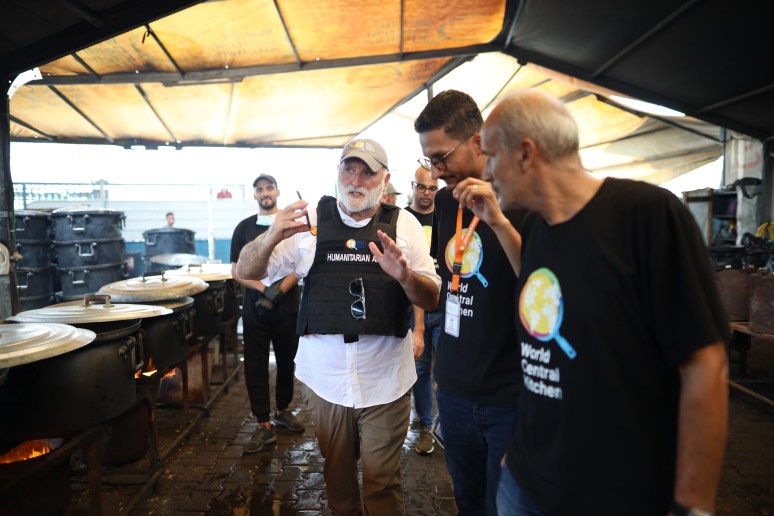The aftermath of the Kakhovka dam collapse

In the 16 months since Russia’s full-scale invasion of Ukraine began, WCK teams have seen communities come together to support one another. Neighbors helping neighbors is a common sight throughout the country, and it has been no different in the aftermath of the Kakhovka dam destruction and ensuing flooding. The residents of southern Ukraine have continued to help one another and WCK teams have used whatever resources available to lend aid. In total, we have provided more than 36,000 meals in areas impacted by the dam’s collapse.
Flooding destroyed entire villages and devastated vast farmland. Still, our teams are witnessing families forge ahead and WCK is standing with them, providing hope one plate of food at a time. By car, by foot, and by boat, our staff and volunteers are reaching people impacted by the flooding with food and water. There have been countless stories of hardship, but, as always, there have been many stories of hope and strength.
Just hours after the dam was destroyed, WCK teams set up sites where families forced to evacuate could get meals. Despite everything they were going through, they greeted our teams with smiles and gratitude.
Four days after the dam was destroyed, our teams from Mykolaiv and Kherson delivered food to the village of Pryozerne, which had been completely submerged in flood water. As the teams prepared to head out, they packed more than 250 jugs of water—five liters each—along with sandwiches and hot meals for families who lost everything.
Our teams are adaptable, using any type of transportation necessary to get nourishment to people who need it. By using inflatable boats, we were able to reach civilians in areas that were still cut off by the catastrophic flooding.
Anatoliy lives in the village of Pryozerne and his home was entirely flooded. Days after the dam fell, the lower floor of his home was still submerged. In spite of his own personal circumstances, he continued to help his neighbors get to safety. The WCK team who met him admired his selflessness and determination, and made sure he had food and water to keep up his strength.

While navigating flooded streets in the village, our team saw this man closing a gate. On the red wall behind him, they noticed the line showing how high the water levels reached at the peak of the flooding.

What looks like a waterlogged pile of boxes was once a thriving home for pollinators. A local beekeeper explained to the WCK team that there used to be eleven bee families living there, but they all perished or flew away because of the floods.
In the weeks since the dam collapsed, the water level and quality in the Kakhovka Reservoir has become a devastating sight. Before the disaster, it contained clear, fresh water that irrigated millions of acres of farmland and was used by tens of thousands of families. Now, it is almost empty, and the remaining water is turning green and sludge-like due to its low level and lack of circulation.
It’s difficult to comprehend the full impact the loss of the reservoir will have—from the local environment to the global food supply chain. The flooding’s immediate and long-term impacts add to the myriad challenges that Ukrainians have endured since Russia’s full-scale invasion began. A nourishing meal may seem like a simple offering in the face of such hardship, and yet time and time again it has proven to be a light in a time of darkness. A reminder that Ukrainian families are not alone, and a bit of strength to see them through the next day.

Learn more about our #ChefsForUkraine response here. For real-time updates, follow WCK on Twitter, Instagram, and Facebook. You can support our work by making a donation here.































